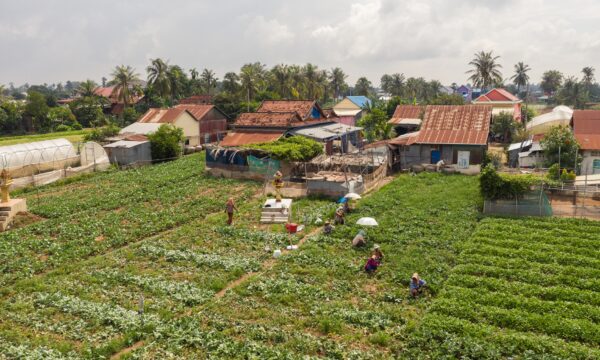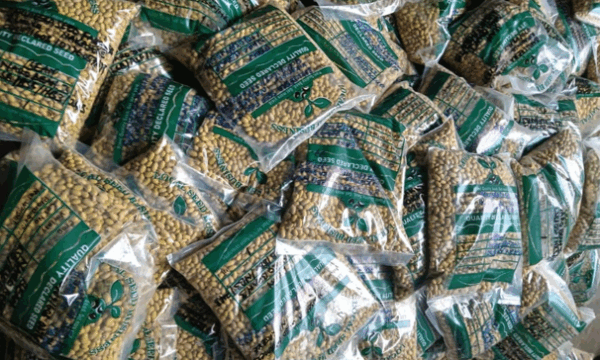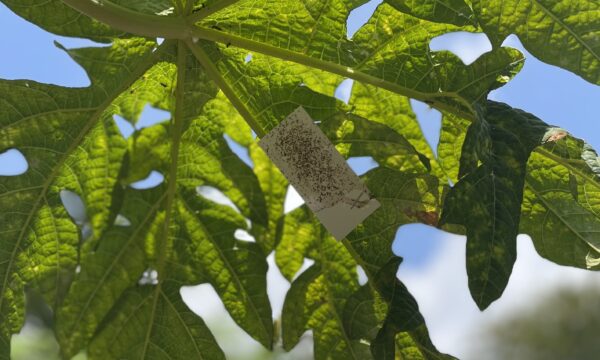
Agriculture in China has grown at a remarkable rate over the past 50 years © Gabriele Quaglia (Flickr, CC BY-NC-SA 2.0 license)
It is predicted that the population of China will stabilise at 1.6 billion within the next two decades. In order to feed this many people, crop production will need to increase by 2% each year to provide the estimated 580 million tonnes of grain that will be required. Mingsheng Fan and colleagues have published a review of past trends in agricultural production in China and the solutions that they think will allow China to produce more food in the future without an increase in available agricultural land. The main crops produced in large quantities in China are cereal crops, particularly wheat, maize and rice. The main limiting factors for the continued increase in agricultural production are water availability and soil quality. There is also the requirement to reduce use of nitrogen and phosphorus fertilisers because they pollute the air and water.
Problem 1: Agricultural intensification as the national population has increased has resulted in nutrients being taken out of the soil. Human activities have led to degradation of soil quality with the average thickness of topsoil being several centimetres thinner now than it was in the 1930s.
Using organic manures such as animal and human waste, and recycling crop stalks in the soil will reduce the need for artificially produced chemicals and help to make the soil more productive. Re-introducing the addition of biochar to soils is a way of storing carbon, and it also helps in holding nutrients within the soil so that they can be released slowly. Practicing reduced tillage, i.e. not removing all of the crop residue after harvest, can lead to fewer weeds, conservation of water and more beneficial pests.
Problem 2: Overall, China has a high volume of freshwater, but its distribution is uneven and not necessarily in the agricultural regions. Also, water resources are threatened by the surface water being used up, the water table getting lower, and pollution of the water that is available.
Better irrigation practices are required so that water isn’t wasted. One way of recycling water is to to irrigate fields with wastewater. Greater investment in infrastructure such as canal systems and wells will improve access to water but the focus should be on reducing water consumption.
Problem 3: China is the largest consumer of fertiliser and has a poor nutrient use efficiency.
Often fertiliser is over-used so in many cases farmers simply need to reduce the quantities of fertiliser that they apply to the soil. By timing applications of fertiliser better, nutrients can be supplied to the plants only when they are most needed. Also, an improvement in the methods used to apply fertiliser will lead to more precise application.
Problem 4: Like the rest of the world, China faces the impacts of climate change. The average national temperature has increased since the 1960s. This is thought to have led to an increase in rice and wheat yields but has been a possible contributing factor to a reduction in maize yield. Climate change will alter rainfall patterns and result in more extreme weather events.
The future effects of climate change are uncertain but development of different crop varieties will provide more resilience to changes in climate.

Girl working in a rice field near Chengdu, Sichuan © UN Photo/John Isaac (Flickr, CC BY-NC-ND 2.0 license)
Many of the problems that Chinese agriculture is facing also apply to farmers in other parts of the world. Similarly, the ways in which China is tackling these problems can be learned from too. China has already invested a lot in the development of low-cost easy-to-use agricultural technologies. Nutrient management systems and water-saving techniques have been developed but implementation of these systems relies on continued investment in this area. The challenge is to sustainably intensify grain production over the China’s existing agricultural land area whilst keeping environmental damage to a minimum.
Source: Mingsheng Fan, Jianbo Shen, Lixing Yuan, Rongfeng Jiang, Xinping Chen, William J. Davies, and Fusuo Zhang (2012) Improving crop productivity and resource use efficiency to ensure food security and environmental quality in China. J. Exp. Bot. 63: 13-24.
Related News & Blogs
The role of soil health in sustainable agriculture
Previously, we have discussed the importance of soil health for agriculture, highlighting its threats and outlining protection strategies. In this blog, we dig deeper into the role of soil health in sustainable agriculture and explore its long-term ben…
18 June 2025





